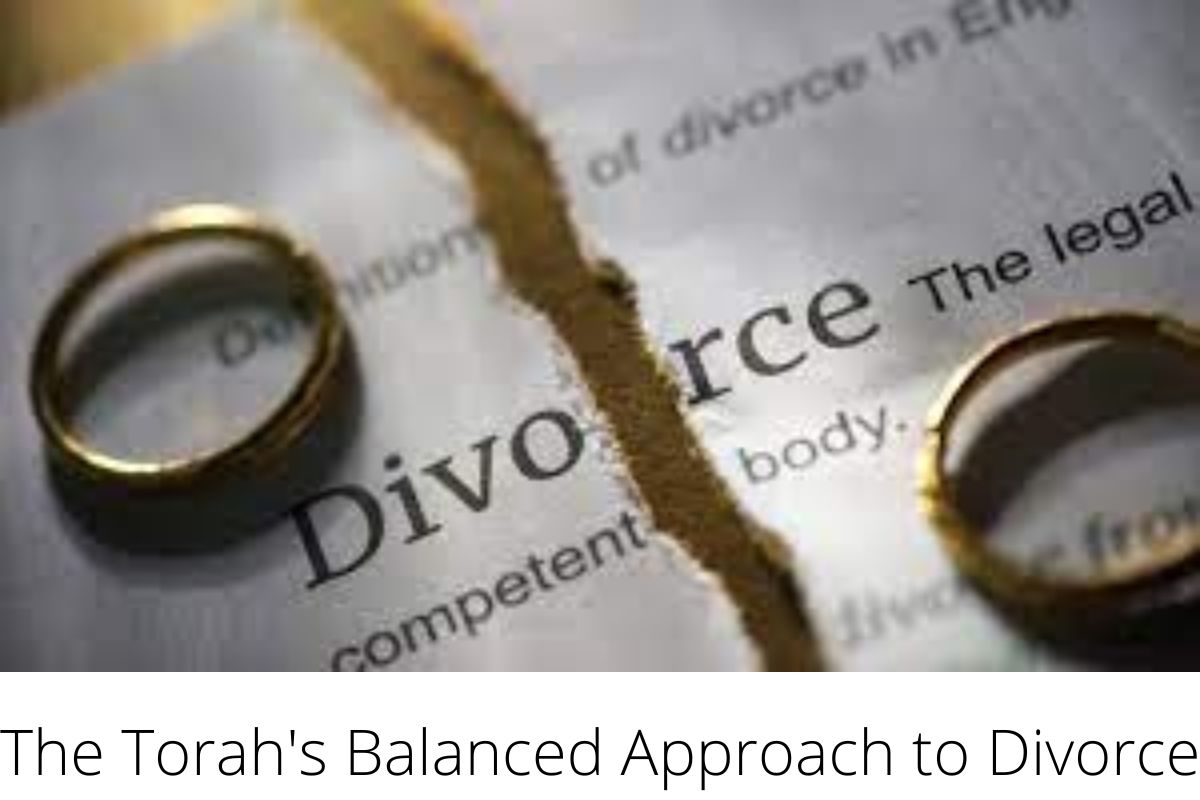[web_stories title="false" excerpt="false" author="false" date="false" archive_link="true" archive_link_label="" circle_size="150" sharp_corners="false" image_alignment="left" number_of_columns="1" number_of_stories="5" order="DESC" orderby="post_title" view="circles" /]
The Middle Way: the Torah’s View on Divorce!
By comparing the Torah’s stance on divorce with two opposites, we are able to better understand its middle ground. On the one hand, Catholicism opposes divorce, but on the other, some Islamic traditions allow for a quick divorce by simply saying the word “talaq” three times.
Both extremes are rejected by the Torah. Due to the reality that divorce is sometimes required and unavoidable, the Torah permits it (Devarim 24:1). In Dugma MiDarkei Avi zt”l number 86, the Chafetz Chaim’s son Rav Aryeh Leib recalls that his father advised a married couple to separate.
A Torah scholar onlooker was astounded, knowing the Chafetz Chaim had gone to such lengths to mediate disputes and broker peace. In response, the Chafetz Chaim cited the halachot of Gittin, which suggest that divorce may be the most amicable option in some cases.
Still, there are other ways in which the Torah actively facilitates divorce. To begin with, a husband must create a divorce document and present it to his wife according to Torah law. Also, the phrase “lah” in Devarim 24:1 (“V’katav lah sefer keritut, he shall write her a bull of divorce”) demonstrates that the get must be prepared for a specific divorce (Gittin 24b). Contrary to a fill-in-the-blanks ketubah, the entire get must be written lishma, or in the first person, for the divorced couple.
Adding to the delay is the fact that we operate according to tradition (or mesorah). A Jewish divorce is a halachically more difficult process than a Torah marriage. Consequently, since the Gemara (Gittin 5b mentions that Rabi Achi was appointed to administer Gittin; we find no such appointment regarding Siddur Kiddushin, marriage administration).
Only rabbis who have had extensive training in the laws and customs surrounding Gittin (Chilcot Gittin) are permitted to perform the ritual. There are currently around forty rabbis in North America who are meager Gittin or get administrators. On the other hand, every rabbi in a given community performs the meager kiddushin function.
Traditionally, a get is written in (slightly modified) Stav Ashurst, the script used for writing Sefer Torah (Shulchan Aruch Even HaEzer 126:1). Consequently, a get can only be written by a skilled scribe.
Furthermore, writing a get is a complex and difficult halacha, necessitating the services of a scribe trained in the art of Gittin. The get is normally 12 lines long, and every line features either an ascending (often the letter lamed) or descending (commonly the letter nun) letter (Shulchan Aruch Even HaEzer 125:11 and 18).
Finally, a get can be written only in certain locations, whereas a wedding can take place anywhere. Bet Shmuel 128:18 notes that Gittin is only permitted in cities situated between two bodies of water. For instance, we refer to Teaneck in a get as “the city that stands upon the Hackensack River and the Overpeck Creek,” and we never set up shop somewhere without the approval of respected rabbis (Aruch HaShulchan, Even HaEzer 128:39).
While in Teaneck, we sought and were granted the blessing of Rabbis Nota Greenblatt, Gedalia Schwartz, Peretz Steinberg, Hershel Schachter, and Mordechai Willig before penning any Ashkenazic Gittin. Furthermore, the Teaneck Sephardic Gittin has been sanctioned by Rav Shlomo Amar.
Jewish divorce proceedings are lengthened by all these prerequisites. Our culture makes it difficult to hold a get in comparison to marriage. It’s intended that the divorce process be governed and restricted. Divorce is possible, but only if both partners are convinced there is absolutely no likelihood of them getting back together.
Students from the Torah Academy of Bergen County stated that all these prerequisites would prevent divorcees who are only tangentially involved in the Jewish community from obtaining a valid get. I responded that this is the challenge of the meager Gittin. It’s important for a Jewish divorce administrator to walk a narrow line. However, he also needs to know when it’s right to intervene and prevent a couple from divorcing too quickly.
When performing a get for a couple in which the husband is a kohen, we need to take extra precautions. They are forbidden to remarry if a kohen divorces his wife. In the time of the Mishna, a specific get known as the get mekushar was administered when the husband was a kohen. The purpose of the lengthy and complicated language used in a get mekushar is to discourage a kohen from divorcing his wife.
Tosafot Bava Batra 160b s.v. Tikun; the Rambam and the Shulchan Aruch do not present the laws of getting Mekushar, therefore meager gotten are responsible for policing the behavior of kohanim in its absence. Convincing a young kohen not to divorce his wife in the early stages of their marriage is one of my proudest achievements. Years later, I witnessed the family at a Simcha, where their four children were laughing and socializing with each other.
Conversely, a meager it needs to be able to respond fast and decisively when the situation calls for it. I once prepared staff to administer a get within 20 minutes. A stubborn spouse had finally decided to engage in a get, and I raced to grab the opportunity to address a situation of Ogun (when one spouse unjustly refuses to offer or receive a get) (where one spouse unjustly refuses to give or receive a get).
Divorce is a possibility that the Torah recognizes in Sefer Devarim, implying that it may be permissible in specific situations. However, Divorce is forbidden by God, according to Sefer Malachi 2:16. The mizbeach cries when a couple separates, according to the Gemara (Gittin 90b).
We want to keep the divorce rate low as a society, but we also want to be able to access it if required. In the 1980s, a get administrator who was born in Eastern Europe noted that divorce was too rare in Jewish communities there before World War II (sadly, there appears to have been a societal shame against divorcing even when necessary), but it is too widespread in North America. I pray that Hashem gives us the insight to find the right middle ground in the Torah with regard to divorce.



